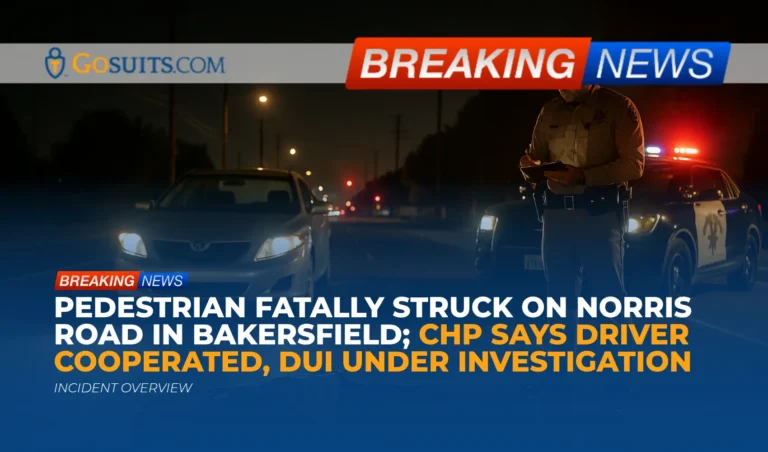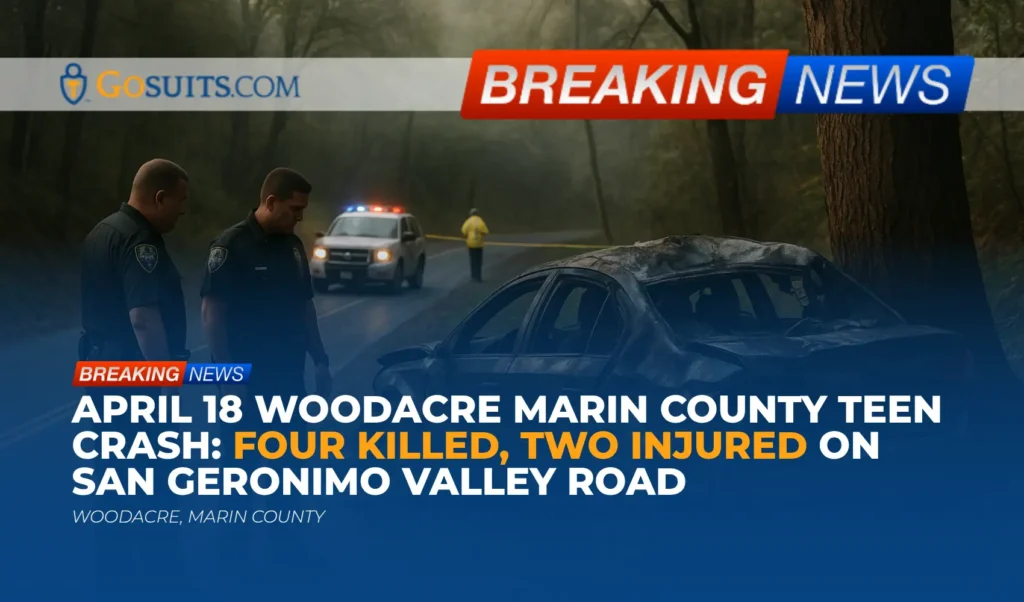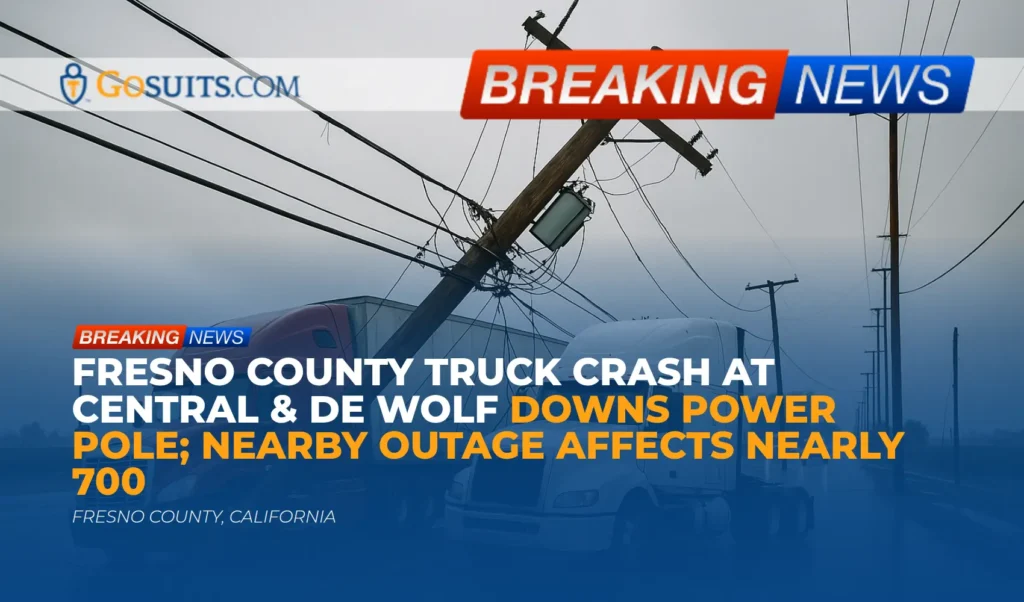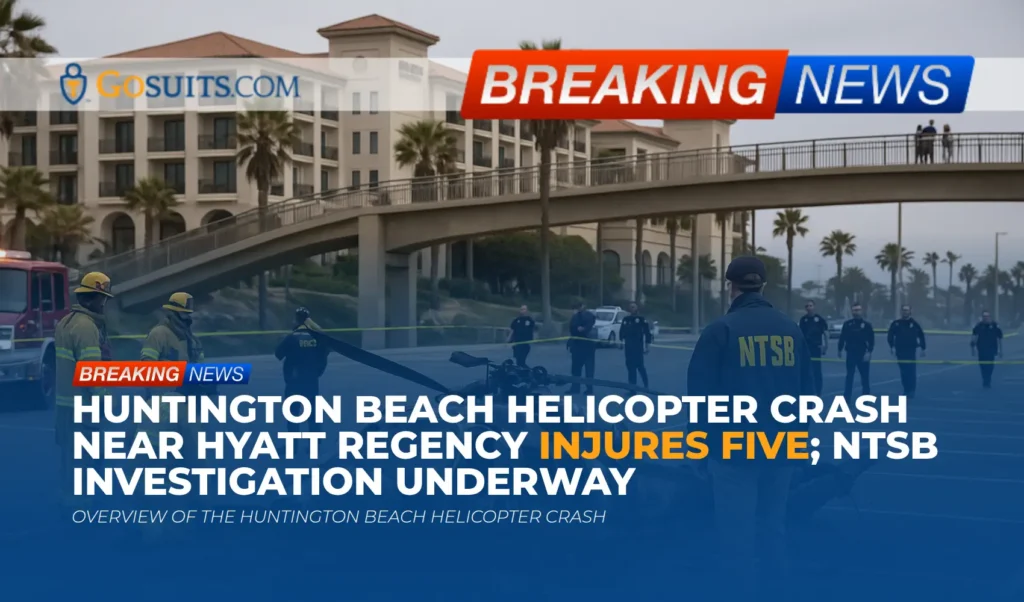- Incident overview
- What police reported so far
- What typically happens next in a fatal traffic investigation
- Key California pedestrian and driver laws that may be relevant
- Possible civil liability theories in pedestrian fatality cases
- Wrongful death and survival claims in California
- Insurance issues after a fatal pedestrian crash
- Documents and evidence families often seek
- Safety and systemic factors commonly seen in nighttime pedestrian crashes
- Support and resources that may help families
- Timelines and legal time limits to be aware of
- How insurance companies approach these cases
- Who to call for official information and records
- Commentary from Gosuits Bakersfield, California Personal Injury Attorney
- Act now: practical next steps to protect legal rights
- Sources
Incident overview
A pedestrian lost his life after being struck by a vehicle on Norris Road in Bakersfield, California, on Thursday night, October 9, 2025. According to the California Highway Patrol (CHP), the collision occurred at approximately 8:55 p.m. on Norris Road, east of Stockton Avenue. Investigators reported that a 27-year-old Bakersfield man was driving a 2010 silver Toyota Corolla eastbound in the number one lane at about 45 miles per hour when the crash occurred.
CHP’s preliminary findings indicate the pedestrian, identified as an adult male, was crossing southbound across Norris Road from the north shoulder outside a marked crosswalk. The driver was reportedly unable to take evasive action and struck the pedestrian. The pedestrian sustained severe injuries and was pronounced deceased at the scene. The Toyota driver stopped nearby and cooperated with authorities. CHP has not yet determined whether alcohol or drugs were factors; that aspect remains under investigation.
We extend sincere sympathy to the family and loved ones during this difficult time. What follows is intended to summarize what is publicly known, explain how investigations usually proceed, and provide general information about rights, evidence, and resources.
What police reported so far
Based on CHP’s initial report:
- When and where: Thursday, October 9, 2025, around 8:55 p.m.; Norris Road east of Stockton Avenue in Bakersfield.
- Involved parties: A 27-year-old Bakersfield man driving a 2010 silver Toyota Corolla; a male pedestrian.
- Direction and speed: The vehicle was traveling eastbound in the number one lane at approximately 45 mph.
- Pedestrian movement: The pedestrian was crossing southbound from the north shoulder, outside a marked crosswalk.
- Post-collision conduct: The driver stopped and cooperated with the investigation.
- Injury outcome: The pedestrian suffered fatal injuries and was pronounced dead at the scene.
- Unknowns: Whether alcohol or drugs played a role remains undetermined pending investigation and, if applicable, toxicology.
These are preliminary details and may be refined as CHP completes scene analysis, interviews, and reviews physical and electronic evidence.
What typically happens next in a fatal traffic investigation
In a fatal traffic collision, law enforcement typically conducts an in-depth investigation to determine the sequence of events and contributing factors. While specific steps vary by agency and circumstances, it often includes:
- Scene documentation: Measurements, photographs, and mapping of roadway evidence such as tire marks, debris fields, gouge marks, and final rest positions.
- Vehicle inspections: Evaluations for lighting function, brake condition, windshield damage patterns, and data downloads if event data recorders (EDRs) are present.
- Interviews: Statements from the driver, any passengers, independent witnesses, and nearby residents or workers who may have seen or heard the event.
- Lighting and visibility assessment: Review of ambient lighting, roadway lighting, weather conditions, and sight lines.
- Speed and time-distance analysis: Estimations based on physical evidence and, where applicable, onboard vehicle data.
- Toxicology: If relevant, toxicology testing of involved parties, with results often taking weeks.
- Coroner’s investigation: The county coroner or medical examiner determines cause and manner of death and may issue an autopsy and toxicology report pursuant to California Government Code section 27491.
Families often have questions about timelines. Collision reports may take several weeks or longer to finalize. Coroner reports and toxicology can also take weeks to a few months, depending on laboratory backlogs and case complexity.
Key California pedestrian and driver laws that may be relevant
Every case turns on its specific facts, but several California statutes commonly factor into civil evaluations of pedestrian collisions:
- Pedestrians outside crosswalks: Vehicle Code section 21954 states that a pedestrian crossing outside a marked crosswalk must yield the right of way to vehicles, but it does not relieve a driver of the duty to exercise due care for the safety of any pedestrian on a roadway.
- Driver duties toward pedestrians: Vehicle Code section 21950 requires drivers to yield to pedestrians in marked crosswalks and at intersections and to exercise all due care, which includes reducing speed and operating with caution for pedestrian safety.
- Basic speed law: Vehicle Code section 22350 prohibits driving at a speed greater than is reasonable or prudent having due regard for weather, visibility, traffic, and the surface and width of the highway. In civil cases, this can be relevant even if the driver was at or below the posted limit.
These statutes are often analyzed together with roadway design, lighting conditions, and visibility to understand how the crash occurred and what reasonable precautions were required under the circumstances.
Possible civil liability theories in pedestrian fatality cases
Civil liability in pedestrian crashes depends on the facts and proof available. Without speculating about fault in this specific incident, the following frameworks frequently arise in California:
- Driver negligence: Allegations may include failure to keep a proper lookout, unsafe speed considering conditions, or failure to take reasonable evasive action when a hazard became apparent. Compliance with or violation of the basic speed law and other safety statutes is often examined.
- Comparative fault: California follows a comparative negligence model, meaning a pedestrian’s decisions (such as crossing outside a crosswalk) can be considered alongside a driver’s obligations to operate with due care. Allocation of fault, if any, depends on detailed evidence.
- Public entity roadway claims: In some cases, families investigate whether roadway configuration, sightlines, lighting, or crosswalk placement contributed to risk. Claims against a public entity have strict notice requirements under the Government Claims Act, discussed below.
- Third-party liability: In limited scenarios, others may share responsibility, such as employers when a driver is on the job, or vehicle owners under permissive use theories. These are fact-specific issues.
It is important to remember that a preliminary traffic report is one piece of evidence. Civil evaluations commonly incorporate additional materials, including scene measurements, data downloads, and expert reconstructions, before opinions are formed about responsibility.
Wrongful death and survival claims in California
In California, certain surviving family members may bring a wrongful death claim under Code of Civil Procedure section 377.60. This action generally seeks compensation for losses suffered by survivors due to the death, such as loss of financial support, contributions to household services, and the loss of companionship and support. Separately, a survival action under Code of Civil Procedure section 377.30 allows the decedent’s estate to pursue claims the decedent could have brought had they survived, including certain economic losses accrued between injury and death.
Eligibility, categories of recoverable damages, and how claims interact can be nuanced. The facts of the incident, the identities of heirs, and the applicable insurance policies all matter. Families commonly consult with a seasoned attorney to understand who may file, what documents are needed, and how to avoid conflicts among heirs.
Insurance issues after a fatal pedestrian crash
Insurance coverage and claims can become complex after a fatal collision. While general principles are noted below, each policy is different and terms matter:
- Driver’s liability coverage: Bodily injury liability coverage is typically the primary policy for third-party bodily injury and wrongful death claims.
- Uninsured/underinsured motorist (UM/UIM): If the pedestrian had their own auto policy with UM/UIM coverage, it may apply even though the person was walking. This can be significant if the at-fault driver’s coverage is insufficient. Policies vary, so language must be reviewed.
- Medical payments coverage: Some auto policies include medical payments that may assist with certain expenses without regard to fault, subject to policy terms.
- Recorded statements: Insurers often request recorded statements from families. It is prudent to consult an attorney first, as statements can be used in ways that affect fault determinations and settlement positions.
If any entity claims the involved driver was working at the time, an employer’s commercial coverage may be implicated. Confirming trip purpose and employment issues early can be important.
Documents and evidence families often seek
Gathering official documents helps families understand what happened and preserve the record. The items below are commonly requested in California. Where possible, we cite government sources about the process.
Collision report from CHP
The California Highway Patrol maintains traffic collision reports for crashes it investigates. Eligible parties can request a copy using CHP’s process for collision reports. CHP explains report eligibility and request procedures on its official site. See CHP’s information on Collision Reports. Processing times vary; you may be asked for the date, time, location, and report number.
Coroner’s investigation, autopsy, and toxicology
In California, the county coroner or medical examiner investigates certain deaths, including fatalities from traffic collisions, under Government Code section 27491. Families may request copies of the coroner’s reports and, when complete, toxicology findings. Each county sets procedures for access, fees, and timelines consistent with state law and public records rules. Because policies differ by county, contacting the sheriff-coroner’s office for instructions is usually the first step.

Death certificates
Certified death certificates are issued through the California Department of Public Health (CDPH) or the county recorder. Application procedures and eligibility are described by CDPH’s Vital Records. These records are often required for many practical matters, including insurance and estate tasks.
Public records and 911 recordings
California’s Public Records Act provides access to many government records, subject to exemptions. The California Attorney General’s site explains public records principles and how agencies handle requests. See the overview of open government and records at the Attorney General’s page on Open Government. Some families request 911 recordings, dispatch logs, or scene photographs if available and releasable. Response times and disclosure rules vary.
Other helpful information to preserve
- Photos and video: Any photos of the scene, lighting conditions, or nearby surveillance or doorbell camera footage. Nearby businesses and residences sometimes overwrite footage within days.
- Witness information: Names, contact details, and any written or recorded statements provided to law enforcement.
- Medical and funeral records: Invoices and receipts can be relevant to damages documentation in a civil claim.
Safety and systemic factors commonly seen in nighttime pedestrian crashes
National safety agencies have documented elevated risks for pedestrians during low-light conditions and outside of intersections. The National Highway Traffic Safety Administration (NHTSA) notes that pedestrian fatalities disproportionately occur at night and frequently away from intersections. See NHTSA’s summary on Pedestrian Safety. The Centers for Disease Control and Prevention also highlights the increased risk to pedestrians from vehicle speed and visibility limitations at night; see CDC’s Pedestrian Safety page.
Speed and stopping distance matter. Even modest increases in vehicle speed reduce a driver’s time to react and lengthen stopping distances, affecting whether a collision can be avoided or mitigated. The Federal Highway Administration’s pedestrian safety materials discuss strategies like improved lighting, marked crosswalks in appropriate locations, and traffic calming to reduce risk; see FHWA’s Pedestrian and Bicycle Safety resources.
These general risk factors do not determine fault in any one case. They offer context for understanding how visibility, roadway design, and driver behavior can combine to influence outcomes. Investigators typically assess lighting conditions, crosswalk proximity, driver speed, pedestrian clothing visibility, and sight obstructions when reconstructing events.
Support and resources that may help families
The days and weeks after a sudden loss are overwhelming. Beyond official reports, families often seek practical assistance and information:
- Law enforcement liaison: Staying in contact with the investigating CHP area office can help families receive updates when reports are finalized.
- Coroner liaison: The county sheriff-coroner’s office can advise on timelines for release of remains, autopsy findings, and toxicology, as well as how to request copies when complete.
- State vital records: CDPH provides information on how to obtain certified death certificates needed for estate and insurance matters.
- Crime victim assistance (if applicable): If law enforcement determines the death resulted from a qualifying crime (for example, certain DUI cases), the California Victim Compensation Board may offer limited financial assistance; see California Victim Compensation Board. Eligibility depends on a criminal component; not all traffic incidents qualify.
Friends, community organizations, and faith communities can also be vital sources of day-to-day support. Keeping a simple notebook of contacts, dates, and pending tasks can help manage the many parallel processes that follow a loss.
Timelines and legal time limits to be aware of
California imposes time limits on civil claims. Families should be mindful of:
- General wrongful death statute of limitations: In most cases, two years from the date of death under Code of Civil Procedure section 335.1.
- Claims involving public entities: If a claim could involve a city, county, or state agency (for example, an allegation of dangerous roadway condition), a government claim typically must be filed within six months under the Government Claims Act. See Government Code section 911.2.
Time limits can be affected by specific facts, including claim type and the parties involved. Because deadlines are strict, it is common for families to seek a free consultation early to understand which timelines may apply.
How insurance companies approach these cases
Insurance carriers evaluate liability and damages with an eye toward minimizing payouts. In pedestrian cases, insurers may quickly focus on issues like crossing location and clothing visibility. Adjusters often:
- Request recorded statements: What is said can influence liability evaluations. Speaking with an attorney first helps protect rights and framing of facts.
- Seek broad medical and personal records: Scope should be carefully reviewed for relevance.
- Use comparative fault arguments: Even where a driver had duties under the basic speed law or due care standards, carriers may assign high percentages of fault to pedestrians who crossed mid-block.
- Make early settlement offers: Early offers can be made before coroner or collision reports are complete, sometimes before the full picture is known.
Communications with insurers are important and can be used later. Many families choose to consult an attorney before speaking with insurance companies so they understand their rights and potential consequences of statements.
Who to call for official information and records
The following points of contact are commonly involved in Bakersfield-area fatal traffic investigations:
- California Highway Patrol (CHP) – local area office: For updates on the collision report, clarification of report numbers, and report release timelines. See CHP’s general guidance on Collision Reports.
- County Sheriff-Coroner’s Office: For information about the coroner’s investigation, release of remains, autopsy and toxicology report availability, and request procedures under Gov. Code § 27491. Each county publishes its own process.
- California Department of Public Health (CDPH) – Vital Records: To obtain certified death certificates as needed for practical and legal affairs. See CDPH’s Vital Records.
- Public agency records contacts: For 911 audio, dispatch logs, and certain records, the California Attorney General’s overview of the Public Records Act explains general access rights and exemptions.
When calling, it helps to have the incident date, approximate time, location, and the name of the investigator or report number if available. Agencies often cannot provide substantive details until reports are finalized, but they can explain timelines and next steps.

Commentary from Gosuits Bakersfield, California Personal Injury Attorney
Our hearts go out to the family and community affected by this tragedy on Norris Road. This discussion is shared for educational purposes and general information only. Every situation is unique, and thoughtful review of the specific evidence is essential.
Nighttime pedestrian collisions raise challenging questions about visibility, driver speed relative to conditions, and pedestrian decision-making. California law requires pedestrians outside a crosswalk to yield, yet drivers must still use due care and comply with the basic speed law considering visibility and roadway conditions. Determining what was reasonable in the moment is evidence-driven and should account for lighting, sight lines, traffic conditions, and response opportunities.
In our experience, insurance companies often move fast to shape the narrative, leaning heavily on comparative fault arguments in mid-block crossing cases. They may request statements before families have coroner results or a complete traffic report and can point to crossing location without fully examining speed, lighting, and the driver’s reaction time. That imbalance of information can disadvantage families at a fragile time.
A free consultation helps people understand their rights, what documents to gather, and how to avoid common pitfalls with insurers. It also helps ensure that any statements provided are accurate, measured, and do not unintentionally limit civil claims.
Act now: practical next steps to protect legal rights
The period immediately following a fatal crash is emotionally and logistically difficult. Acting promptly can preserve crucial information and options that may not be available later. Consider the following:
- Prioritize official records: Note the incident date, time, exact location, and investigating agency. Track the report number if given. Ask when the collision report is expected to be released and what is needed to obtain it.
- Request coroner guidance early: Contact the county sheriff-coroner to understand timelines for release of remains, autopsy findings, and toxicology. Ask how to request copies and estimated time frames.
- Preserve private evidence: Politely ask nearby businesses or residents if they have exterior cameras that could have captured the event. Camera systems can overwrite footage quickly, sometimes within days.
- Keep a document folder: Save funeral invoices, travel receipts, and any expenses connected to the loss. These records can matter in later claims.
- Be cautious with insurers: Before calling any insurance company, speak with a qualified attorney. Statements can be used later and can affect liability assessments and settlement valuations.
- Calendar deadlines: Make a simple timeline of expected report releases and key legal deadlines. For example, note the general two-year limit for wrongful death claims and the six-month government claim notice if a public entity might be involved. Acting within these time frames preserves options.
- Avoid speculation on social media: Public comments can be taken out of context. Waiting for official findings and legal guidance helps protect the integrity of the case.
Timely, organized steps reduce stress later and help ensure that decisions are made with full information.
Sources
- National Highway Traffic Safety Administration – Pedestrian Safety
- Federal Highway Administration – Pedestrian and Bicycle Safety
- Centers for Disease Control and Prevention – Pedestrian Safety
- California Highway Patrol – Collision Reports
- California Attorney General – Open Government and Public Records
- California Department of Public Health – Vital Records
- California Vehicle Code § 21954
- California Vehicle Code § 21950
- California Vehicle Code § 22350
- California Code of Civil Procedure § 335.1
- California Code of Civil Procedure § 377.60
- California Code of Civil Procedure § 377.30
- California Government Code § 911.2
- California Government Code § 27491






